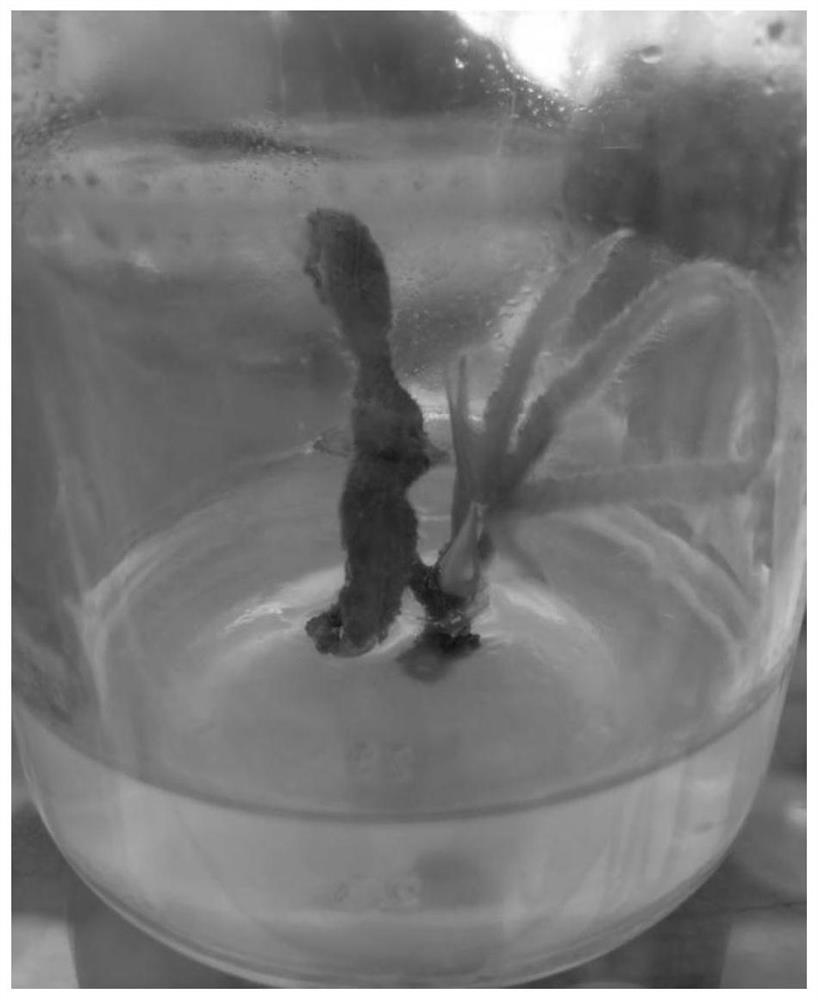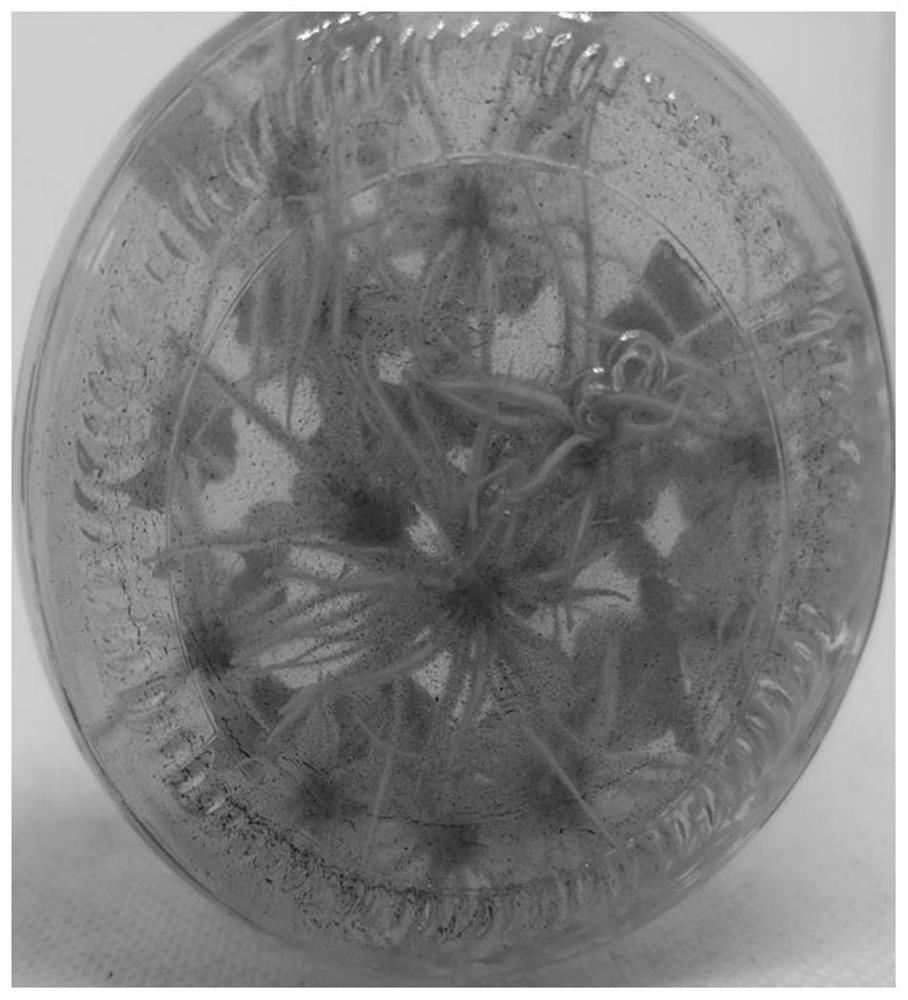Efficient tissue culture breeding method for ficus hirta
A technology of tissue culture of Ficus thick-leaf, applied in the field of high-efficiency tissue culture and breeding of Ficus thick-leaf, which can solve the problems of high production cost, poor seedling quality, low induction rate and multiplication coefficient, etc., achieve good economic and social benefits, and successfully sterilize The effect of increasing the rate and increasing the multiplication coefficient
- Summary
- Abstract
- Description
- Claims
- Application Information
AI Technical Summary
Problems solved by technology
Method used
Image
Examples
Embodiment 1
[0049] (1) Plant pretreatment: select robust, no pests and diseases, and fine-looking Ficus ficus plants as the source of explant materials, transplant small plants into pots, and place them in greenhouses or artificial climate chambers after transplanting them into pots Medium-term maintenance, using the soaking method for water supply, spraying the plants with 600 times liquid of chlorothalonil wettable powder with a mass concentration of 75% every 5 days, and selecting them as explants after new shoots germinate;
[0050] (2) Selection and sterilization of explants: Collect young tender stems of the year in sunny days, cut off leaves and petioles, and keep 4cm-6cm in length and 0.5cm-1.0cm in diameter as explant materials Rinse the surface sediment with clean water, scrub the explants with a soft-bristled brush, and then put them into the detergent with a volume concentration of 1% and oscillate and soak for 10 minutes. Soak in bromogeramine disinfectant with a volume conce...
Embodiment 2
[0056] (1) Plant pretreatment: select robust, no pests and diseases, and excellent traits of Ficus sylvestris as the source of explant material. For larger plants that are inconvenient to transplant into pots, non-woven bags can be used to bag the stems Treatment, every 7 days, spray the plants with 1000 times liquid of chlorothalonil wettable powder with a mass concentration of 75%, and select them as explants after sprouting new shoots;
[0057](2) Selection and sterilization of explants: Collect young tender stems of the year in sunny days, cut off leaves and petioles, and keep 4cm-6cm in length and 0.5cm-1.0cm in diameter as explant materials Rinse the surface sediment with clean water, scrub the explants with a soft-bristled brush, and then put them into the detergent with a volume concentration of 1% and oscillate and soak for 10 minutes. Remove the detergent, soak in bromogeramine disinfectant with a volume concentration of 2% for 30 minutes, rinse with running water fo...
Embodiment 3
[0063] (1) Plant pretreatment: select robust, no pests and diseases, and excellent traits of Ficus syringae plants as the source of explant materials, transplant small plants into pots, place them in greenhouses or artificial climate boxes for maintenance, and use the soaking pot method Water supply, every 7 days, spray the plants with 600 times liquid of chlorothalonil wettable powder with a mass concentration of 75%, and select them as explants after sprouting new shoots;
[0064] (2) Selection and sterilization of explants: Collect young tender stems of the year in sunny days, cut off leaves and petioles, and keep 4cm-6cm in length and 0.5cm-1.0cm in diameter as explant materials Rinse the surface sediment with clean water, scrub the explants with a soft-bristled brush, and then put them into the detergent with a volume concentration of 1% and oscillate and soak for 10 minutes. Remove the detergent, soak in bromogeramine disinfectant with a volume concentration of 2% for 30...
PUM
| Property | Measurement | Unit |
|---|---|---|
| Diameter | aaaaa | aaaaa |
| Length | aaaaa | aaaaa |
| Diameter | aaaaa | aaaaa |
Abstract
Description
Claims
Application Information
 Login to View More
Login to View More - R&D
- Intellectual Property
- Life Sciences
- Materials
- Tech Scout
- Unparalleled Data Quality
- Higher Quality Content
- 60% Fewer Hallucinations
Browse by: Latest US Patents, China's latest patents, Technical Efficacy Thesaurus, Application Domain, Technology Topic, Popular Technical Reports.
© 2025 PatSnap. All rights reserved.Legal|Privacy policy|Modern Slavery Act Transparency Statement|Sitemap|About US| Contact US: help@patsnap.com



